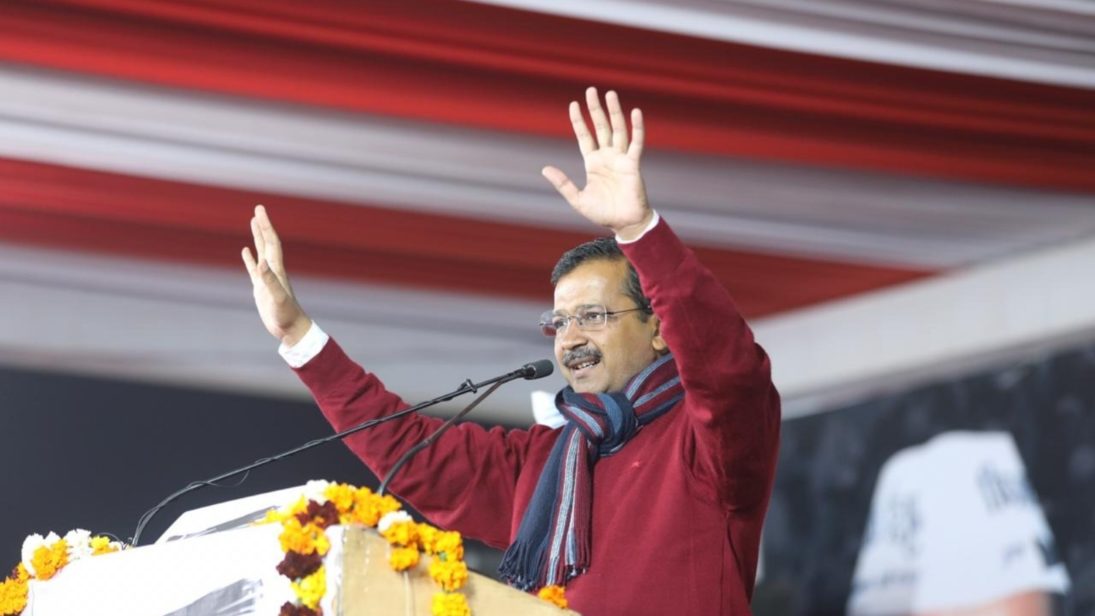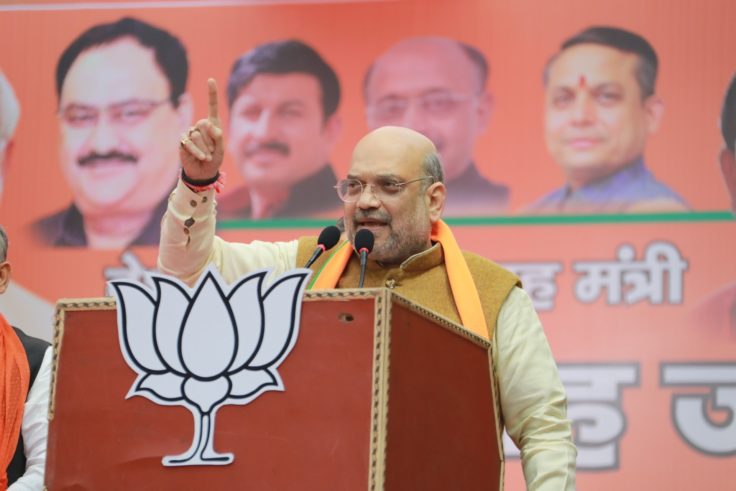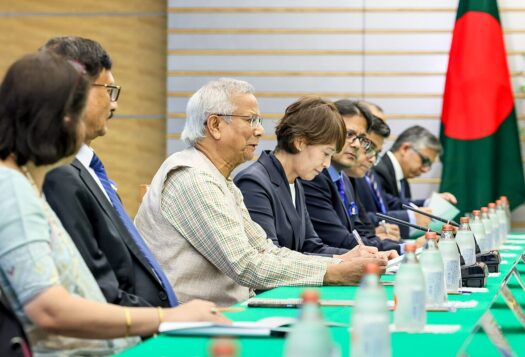
In the recently concluded Delhi elections, the Aam Aadmi Party (AAP) stormed back into power with a thumping majority, securing 62 out of 70 seats and 53.57 percent of the votes cast. The Bharatiya Janata Party (BJP) performed marginally better than it did in 2015—securing eight seats and an increased vote share of 38.51 percent—while the Congress party failed to win a single seat in the capital. The bitterly fought elections witnessed the Delhi chief minister Arvind Kejriwal pitted against the BJP which, without a chief ministerial face, fought under the combined leadership of Prime Minister Narendra Modi, Home Minister Amit Shah, and a number of other BJP leaders. Although the BJP lost the elections the results are unlikely to have any impact on its majoritarian political strategy.
Although the BJP lost the elections the results are unlikely to have any impact on its majoritarian political strategy.
While the young AAP was a favorite for the assembly elections, it had lost all major elections since 2015—including the 2019 Lok Sabha elections. In a battle with Narendra Modi on the national level in 2019, voters in Delhi overwhelmingly favored the BJP. Therefore, the AAP adopted a conscious strategy to avoid a battle of personalities between Modi and Kejriwal and refrained from attacking the BJP on ideological grounds. The AAP deliberately stuck to its narrative of development at the local level by campaigning on its achievements in education, healthcare, and welfare schemes for reduced electricity costs, free water, and free bus ride services for women.
The elections in Delhi had become a matter of power and prestige for the BJP. Amid widespread protests and sit-ins in the national capital over the Citizenship Amendment Act (CAA), a victory in Delhi would represent a stamp of approval on its aggressive, hyper-nationalist politics. Consequently, the BJP employed many of its union ministers, chief ministers, and parliamentarians to camp in localities and lead a campaign against Kejriwal. Much of the campaign was led by Amit Shah himself, who addressed numerous rallies and roadshows to win over Delhi voters.

The BJP’s campaign strategy revolved around using nationalism and religious polarization to shore up its vote bank. In the lead up to the election, senior BJP leaders had accused Kejriwal of being a “terrorist” and “anarchist,” as well as protecting the so-called tukde-tukde gang—a term that has been used by the BJP to accuse opposition of trying to break India apart. While local leaders invoked Pakistan to polarize the elections, some senior leaders resorted to hate speech and incitement, inviting censures from the Election Commission. Both Modi and Shah used the Delhi elections to vent against the ongoing anti-CAA protests at Shaheen Bagh, led by women in Delhi’s Okhla constituency. While Modi stated that these protests were a political experiment meant to destroy “the harmony of the nation”, Shah asked the voters to press the EVM (Electronic Voting Machine) buttons with enough anger so that those protesting at Shaheen Bagh “could feel the current.”
The BJP’s loss in Delhi marks the sixth defeat for the party at the state-level in the last two years. The over-reliance on national leaders and lack of credible local faces showcases the BJP’s weakness, and provides strong regional leaders of the opposition a template to defeat the Modi-Shah duo. However, while the results of the Delhi elections may align with the broader trend of poor BJP performance on the state-level, the BJP’s loss is unlikely to impact its national agenda in any decisive manner.
Observers should be careful in viewing the AAP’s victory as a referendum on the BJP’s majoritarian push or recent national politics including the CAA. … The AAP’s strategic use of religion and nationalism in a way that did not directly challenge the BJP ideologically, marks a significant shift towards the center-right for the Indian polity.
Observers should be careful in viewing the AAP’s victory as a referendum on the BJP’s majoritarian push or recent national policies including the CAA. As put by Rahul Verma, the AAP’s strategic use of religion and nationalism in a way that did not directly challenge the BJP ideologically marks a significant shift towards the center-right for the Indian polity. A number of political experts have remarked that the change in approach of leading opposition parties represents a validation for the BJP’s majoritarian strategies. The BJP, which has at times credited itself for the opposition’s soft Hindutva approach, may find solace in changing the fundamental contours of India’s politics.
With the BJP already stating that the focus on CAA led to an increase in its vote share in the Delhi elections by six per cent, the party is likely to follow its core agenda more aggressively. The stakes are higher for the BJP in vital state elections in Bihar at the end of 2020, and Assam and Bengal in 2021. With a high minority population in these states, the party will most likely stick to its core politics of polarization to galvanize its core voters and reap electoral dividends.
***
Image 1: Arvind Kejriwal via Twitter
Image 2: Amit Shah via Twitter


